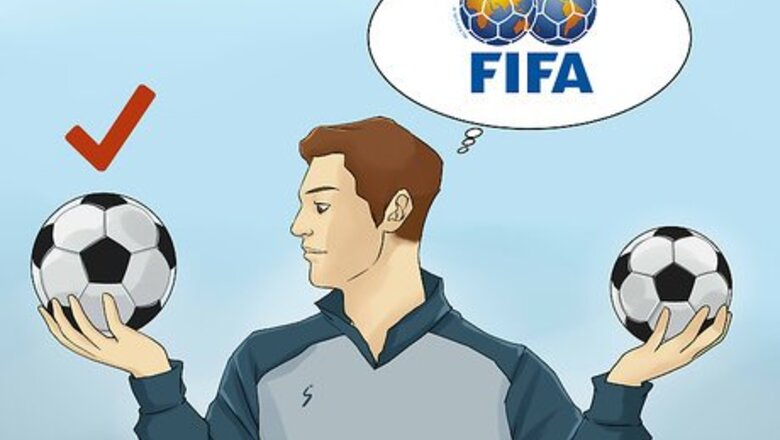
views
Hitting the Perfect Knuckle

Use a well inflated, full-size ball to practice. You want it to be nice and hard, and it absolutely must be regulation size. Hitting a knuckle requires you hit the ball firmly near the center and resist following through -- a flat, small ball will be easy to hit off to the sides and it will stay on your foot for longer, causing a spin. A slightly deflated ball is also a good way to START off with a knuckleball, but later, it is unnecessary. Perfecting this shot takes a lot of practice -- so having 5-10 balls to hit in a row will make your life much easier. It doesn't matter what brand of ball you use to practice, as long as it is full-sized and well pumped.
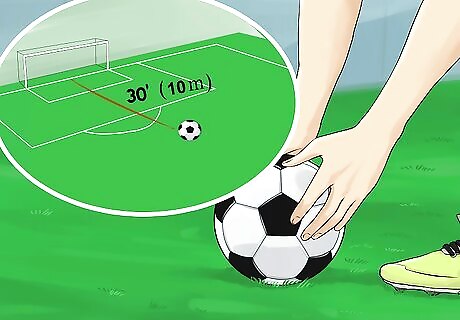
Place your ball about 30 feet (10 meters) away from the goal. While you don't have to shoot at a goal, this is a good target to start with. Don't worry about the placement of your shot just yet -- you want to get the motion down first. As long as you hit in at the goal now you can work on accuracy later.
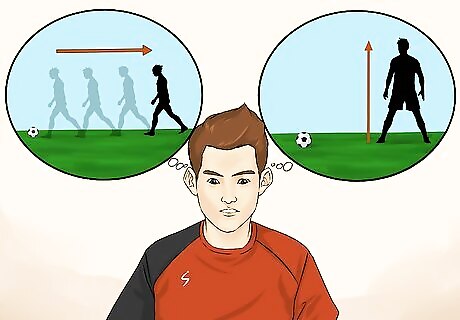
Set up for your normal free kick run-up. If you normally take four steps back and two to the left, you should use the same set-up here. The only difference would be to stand upright, keeping yourself balanced on the balls of both feet. As you hit the ball, you want to keep your chest up straight as much as possible, so it is best to start like this too. Note how knuckleball experts Cristiano Ronaldo and Gareth Bale stand before a free-kick. They stand tall, with their chests almost puffed out.
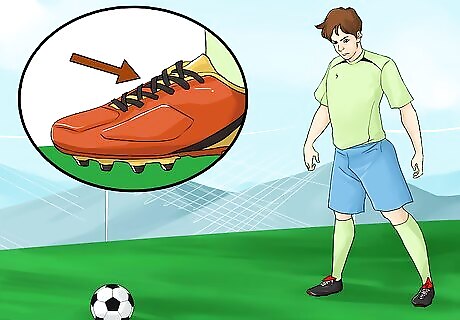
Approach the ball like you would for a normal strike with your laces. Keep your torso up, but otherwise, approach the ball like you were taking a normal free-kick. You'll be hitting the ball with your laces for maximum power and to avoid spin. Approach the ball straight on.

Place your plant foot even with the ball, roughly six inches to the side. After your run-up, you want to place your non-kicking foot as close to the ball as you can get it. Your instep (where the inside edge of your foot curves slightly) should be in the middle of the ball. Your plant toe needs to point in the direction you want the ball to go.
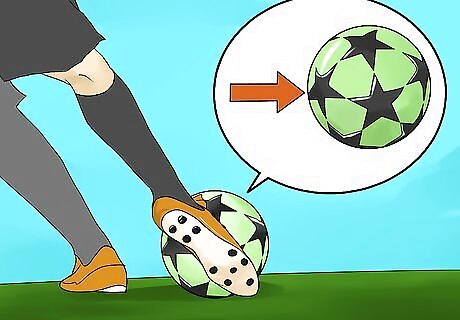
Strike the ball with your laces, right below the very center of the ball. You want to hit the ball as close to dead center as possible, going just slightly lower than center to hit the ball higher in the air (to, for example, get the ball over a wall). Keep your ankle locked firmly -- a wobbly ankle introduces spin. You want your toes pointed straight down. You'll make contact by hitting the ball with the top of your foot, near the bottom of your laces.
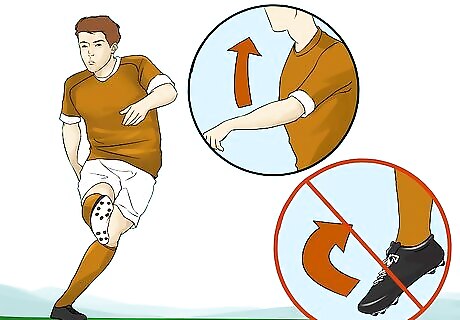
Stop your follow through as soon as you hit the ball. This is the key to a good knuckle, and the hardest part to master. You do not want to follow through on the ball anymore than your momentum makes you. As soon as you make contact, stop driving your leg. You'll feel your shin continue through the ball, but everything above the knee should be mostly quiet. Some players find this easiest if they hop after the strike. As you make contact, pop off your plant foot. Land on your shooting foot first, placing it right where the ball used to be. This is why keeping your torso up, straight, and balanced is so important. It keeps your momentum straight, allowing you to pull off of the shot without adding spin. You want to feel almost like you're slapping the ball. It will take conscience effort to pull your foot back, but the hard part is ensuring you only pull back after you hit the ball.
Troubleshooting
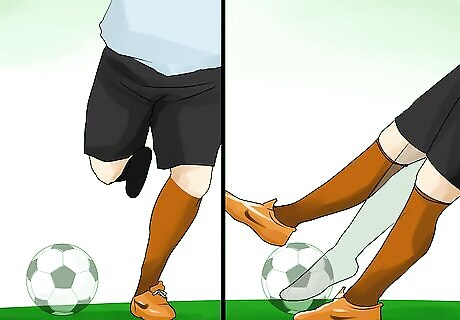
Practice the hop step without a ball. While not all knuckle-ballers take this hop-step, it is incredibly helpful to keep the ball from spinning, especially on free kicks. Think of it as a slight scissor kick. If you're kicking with your right foot, you'd approach and place the left near the ball. As your right leg comes down, pull your left foot up and back, leaving your torso up to stay balanced. You then kick the ball and land on your right foot, placing it almost where the left was. You'll look like your running in place, or snapping your feet past each other like a broken set of scissors.
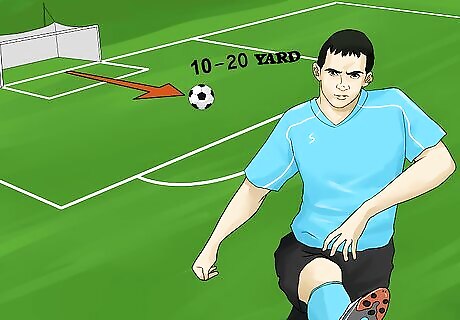
Don't worry about power until you can hit the ball without spin. Many players want to go out, learn the knuckle, and start ripping pro-level free kicks in the same afternoon. Most of those players won't be able to do it. Instead, start learning with a simple 1-step run up, only 10-20 yards away from the goal. Work on a comfortably plant foot distance and resisting your follow-through motion. The ball may not zig-zag much at this speed, but you'll be able tell if it is spinning or not. Once you can hit the ball without spin it's time to move on to full strikes.

Keep your body compact, still, and strong. You want your kicking motion to be as economical as possible. Your plant foot and torso should be set comfortably, with your ankles and knees slightly bent. Your run-up should be well-contained and calm, without lots of twisting, moving, or adjusting. Your kicking leg needs to be strong from quad to ankle, without excess movement. Think about straight lines -- any curves or excess side-to-side movement makes it more likely you hit the ball at an angle, causing spin.
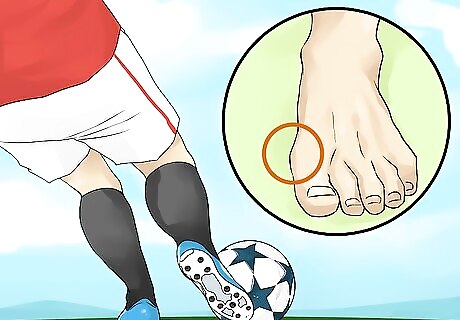
Turn your foot out slightly for added power. Aim to strike with the bone on the inside-top of your foot. The bone in between your laces and instep is the hardest area of your foot. You can feel it with your hand, running from your ankle to big toe. Once you have the basic kick down, work on turning your ankle out slightly to make contact with this rock-hard bone. However, you must keep the rest of your shooting motion straight, hitting the ball in the dead center.
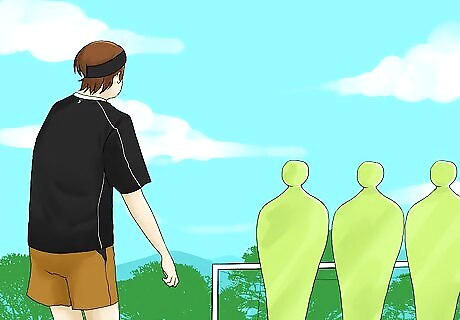
Practice the shot daily, adding challenges as you grow comfortable. No matter how easy and effortless he makes it look, Gareth Bale is the first to admit that the shot took years to perfect. His advice? Start shooting on an open net, then add mannequins or a wall in front of you. Finally, add a keeper to work on accuracy. Above all, hit a few knuckleballs every day, focusing on perfecting the technique so that it becomes second nature.
















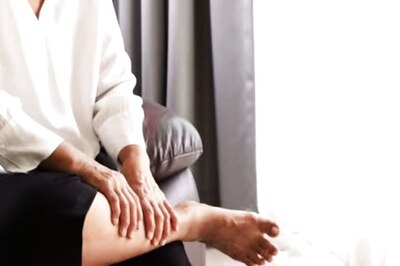
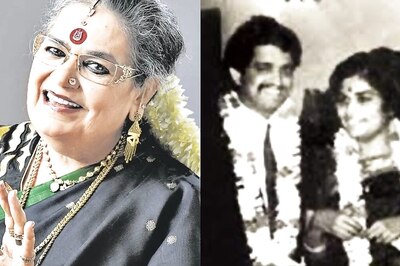

Comments
0 comment